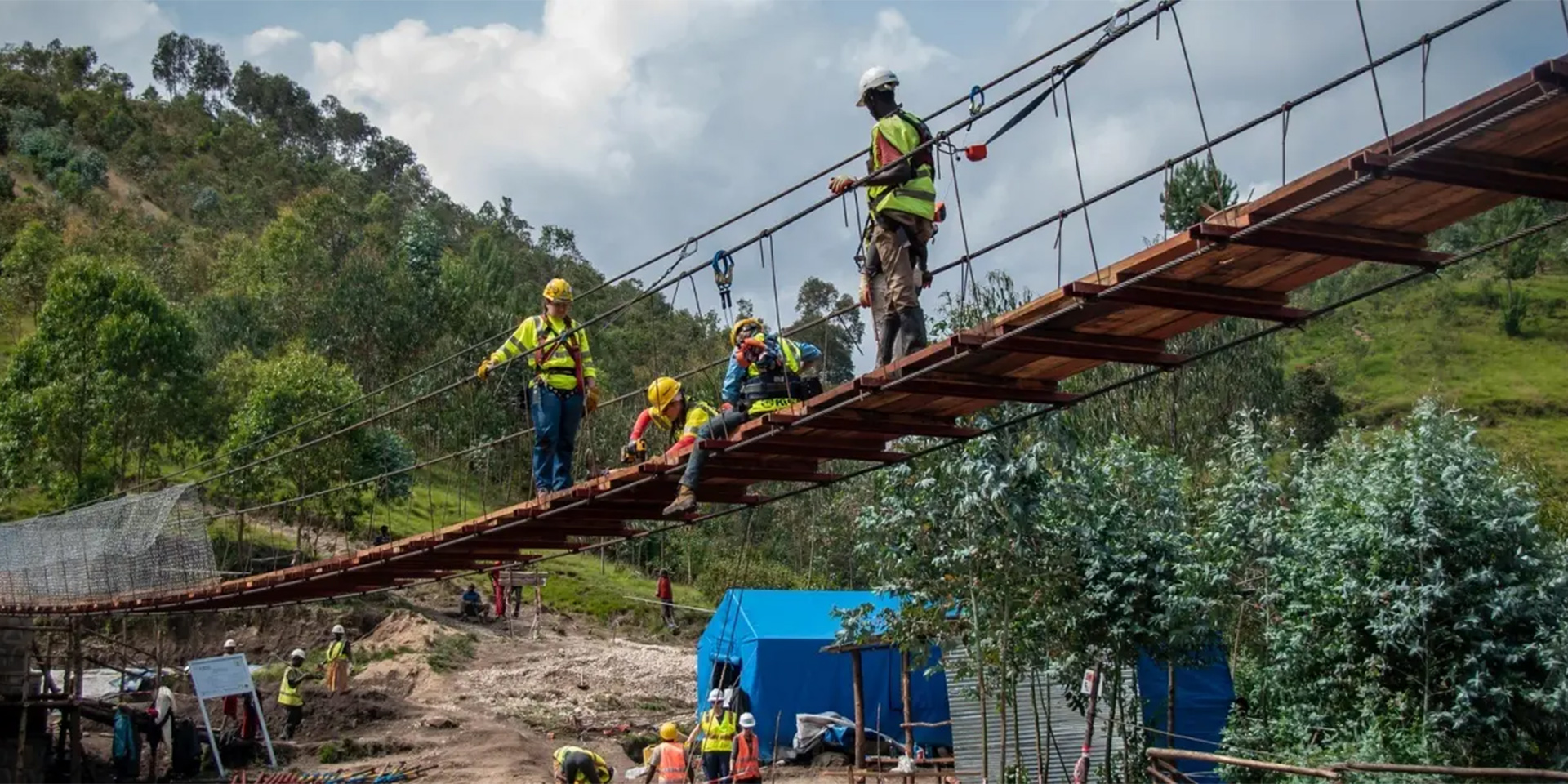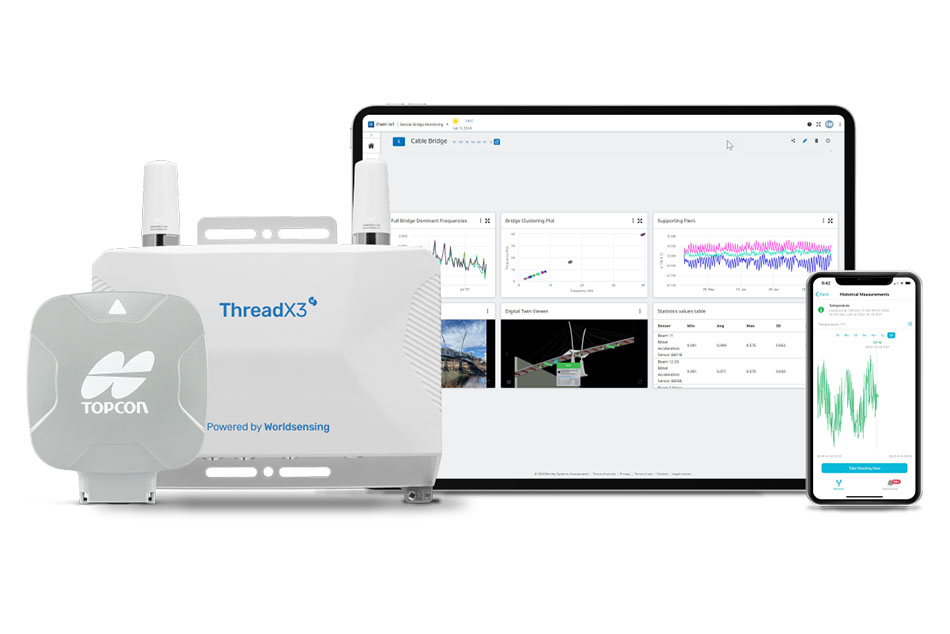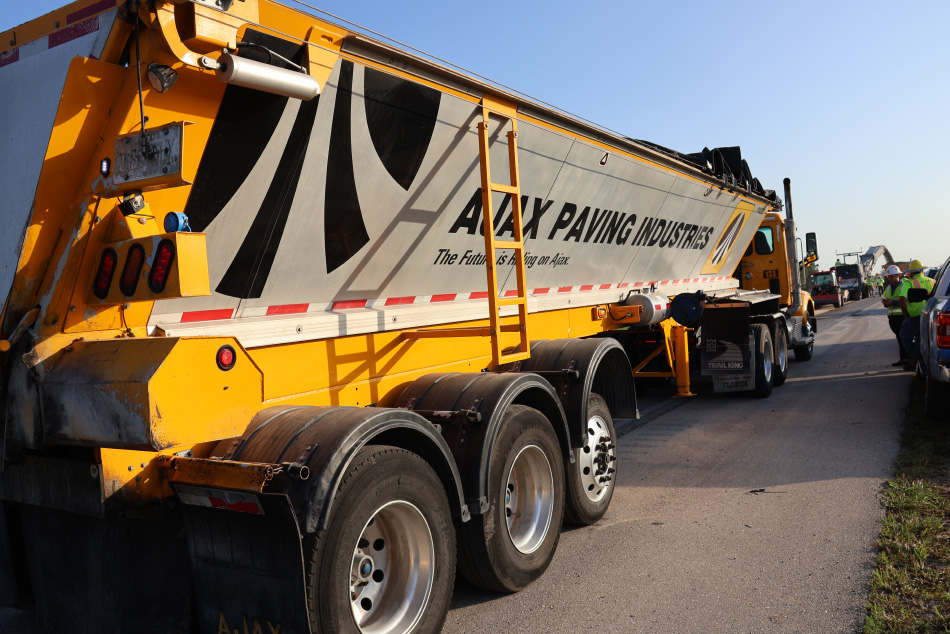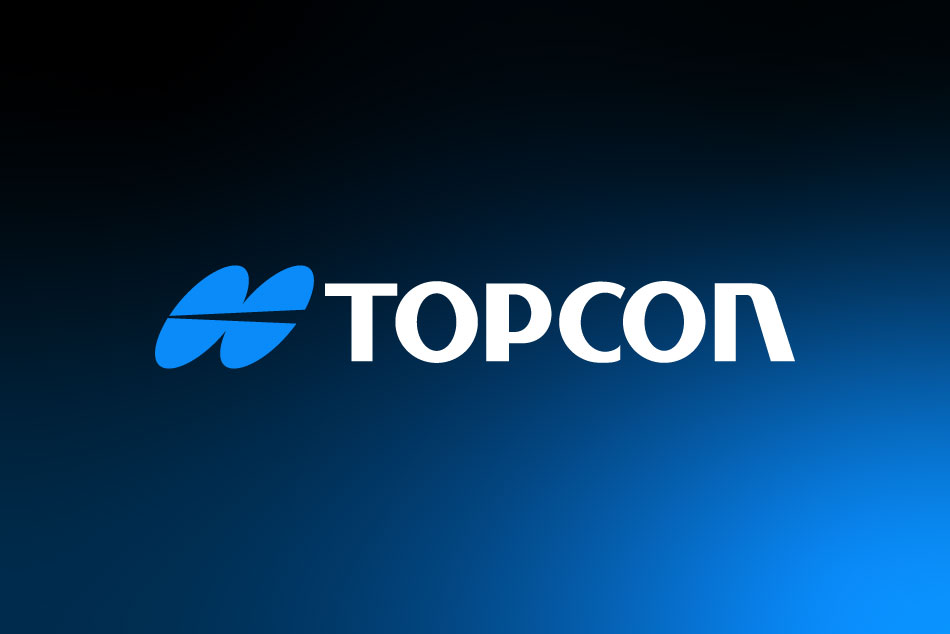The overwhelming majority of Topcon equipment at work today can be found on job sites around the world — projects ranging from massive development excavations to monitoring the smallest movement of a dam’s surface and everything in between. However, there are also a host of organizations using that technology to perform work “under the radar” — work that extends well beyond the traditional and enters the realm of the sublime. For these groups, the resultant benefits are contributing to change that can be measured in, among other things, thousands of lives positively affected, and endangered cultural artifacts preserved. And while the difference every solution Topcon brings is important, as shown in the two examples below, helping make these impactful efforts happen is not just well worth the effort — it underscores what Topcon is and what it’s about as a company.
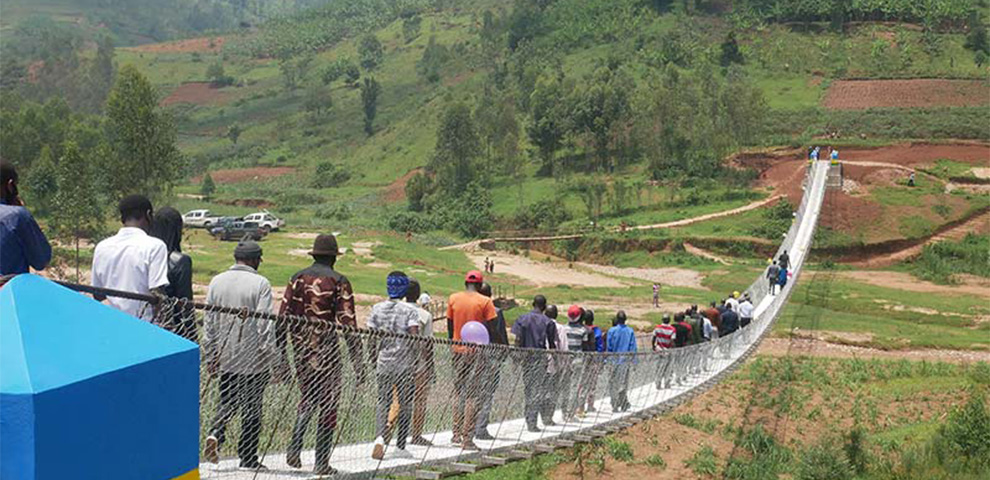
Spanning the Gaps
It borders on shocking that, more than two decades into the 21st century, almost a billion people around the world lack safe access to basic, critical resources such as healthcare, education, or employment due to an impassable river or deep ravine. More than two decades ago, that fact became so disconcerting to a small group of individuals that they formed a not-for-profit organization with a core set of beliefs that: 1.) Rural isolation is a root cause of poverty, and 2.) Connection is the foundation for opportunity. Today, Bridges to Prosperity (B2P) as they are known, builds safe, structurally sound trail bridges to bring about that connection. Doing so, they quickly learned, can have an immediate, impactful effect on the lives of those in the area.
With an ambitious goal to build 60 trail bridges per year, B2P relies heavily upon both individual donations and corporate partnerships. Closely aligned with B2P since 2020, Topcon has provided financial support as well as equipment to help with the layout and construction of the bridges, according to Ron Oberlander, vice president of Topcon Global Professional Services.
“Because their philosophy so closely aligns with our own, we feel strongly about providing the help we can,” he said. “It’s a humbling experience to know that so many lives have been immediately improved by a project you helped make happen. But that’s exactly what takes place with every structure B2P completes.”
To maximize the involvement of people in the local communities, B2P hires anywhere from 20 to 30 workers each workday and trains them in general construction techniques. With 11 bridges currently under construction in Rwanda alone, the impact of doing so can be substantial. In addition, 10 of the workers, called “the bridge committee,” are selected at the beginning of each project to also be trained in inspection and maintenance of the bridge after construction has finished.
“Because their philosophy so closely aligns with our own, we feel strongly about providing the help we can.”
Ron Oberlander, vice president of Topcon Global Professional Services
Numbers Don’t Lie
Those who might see the construction of footbridges in remote areas of Central and South America or sub-Saharan Africa as a “quaint” idea, could not be more wrong. In a three-year Nicaragua-based study jointly conducted by Bridges to Prosperity and economists at the University of Notre Dame and Yale University, the economic impact brought about by a footbridge was examined and the results were eye-opening. It found that, when compared to communities in similar conditions that chose not to allow bridge construction, a single such structure resulted in a 30 percent increase in household income to the area and a 56 percent increase in agricultural yields of staple corn crops. Investments back into the community also jumped, represented by a 69 percent increase in spending on agricultural goods like fertilizers and pesticides.
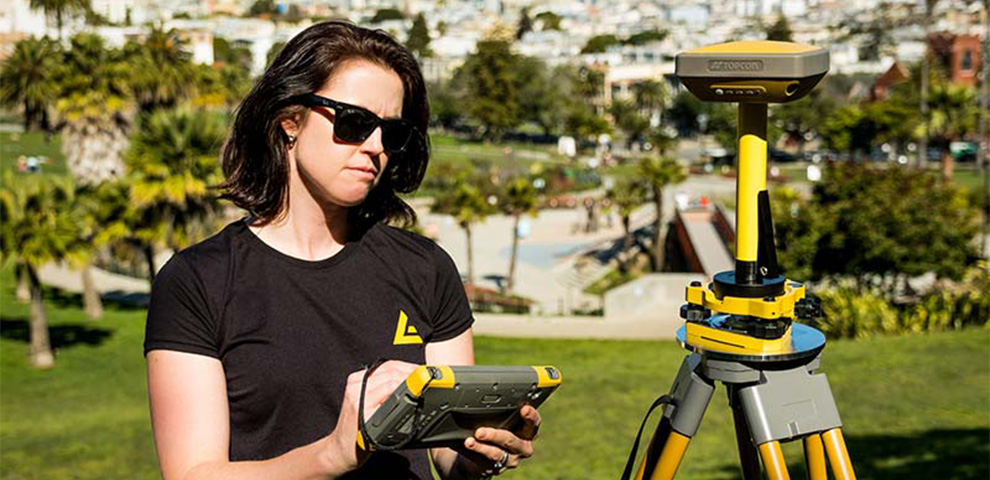
In light of such compelling facts, it’s not hard to see why the Topcon commitment to B2P’s efforts is so strong. According to Oberlander, the equipment the company has donated is indicative of how easy it is to make a difference.
“To date, we’ve sent both equipment and subscriptions for our suite of software solutions to the B2P teams in Rwanda and Uganda,” he said. “It has already played a huge role in improving the workflow and quality of the bridges being built by them. Most of these structures are very basic in design but they nevertheless answer to the same construction demands as any other bridge. So, the more we can enhance those efforts, the better the build will be and the faster they can move on to the next one. A company like ours rarely gets to see the direct, profound connection it can make with a customer — in a sense, this is a gift to us.”
The ability to make — and benefit from — such an immediate impact is also felt by B2P’s team members. One of those, Nicola Turrini, manager of Global Corporate Partnerships, has been providing his services to the organization since 2017 and says his choice of profession is validated and what he hoped to get from it is realized through his work with B2P.
“I am a structural engineer and finding a way to change people’s lives through my work has always been my goal,” he said. “Bridges to Prosperity permits me to do it day after day, connecting rural communities over un-passable rivers to essential services like healthcare, education and markets. And, because B2P has signed a Memorandum of Understanding with the Government of Rwanda to build more than 300 bridges in the next five years, I will be feeing that satisfaction for some time.”
History in 3D
While B2P’s efforts focus on making an immediate difference, CyArk is challenged with ensuring that elements of the past are not forgotten. The mission of the Oakland, California-based nonprofit company, which specializes in 3D digital preservation of cultural heritage sites worldwide, is to see that these places survive — albeit in digital form — the potential destruction caused by both natural and man-made events. Topcon has been working with the organization since 2015 and currently enjoys a highly successful partnership with them.
When questioning why cultural artifacts would need to be scanned and digitally stored for future generations, the most obvious answer is because of damage from the environment. And that has never been truer than now, given the effects of global climate change. However, the risk from man causing harm to these irreplaceable artifacts is as real as that from any natural disaster. The destruction of a pair of massive sixth century Bamiyan Buddha statues in Afghanistan by the Taliban in 2001, the 2015 razing of artifacts on the Nimrud archaeological site in Iraq by ISIS, and the recent arson attack which damaged 2,000 year-old artifacts at the Kidron Valley site in Jerusalem are just a few examples of the blatant disregard some have for invaluable cultural treasures. To counter that, CyArk digitally captures both natural and man-made structures and sites and, while not physically saving them, at least preserves their scanned images for generations to come and share their stories with a virtual audience today. Already more than 200 such treasures, on every continent, have been scanned and curated.
“They were eager to collaborate to show the general public what the post-fire environment was like and also to tell the story of rejuvenation and regrowth of the site after the fires.”
John Ristevski, CyArk chairman and CEO
Forest for the Trees
CyArk’s focus has traditionally been on cultural sites — the organization generally visits between 12-15 locations per year and can have as many as a half dozen projects in progress at one time. In 2020, however, they broadened the scope of their work after consultation with California State Parks (California Department of Parks and Recreation), to digitally document the impact of the CZU Lightning Complex fire on some of the most well-known, old-growth giant redwood trees in Big Basin Redwood State Park, according to John Ristevski, CyArk chairman and CEO.
“We’ve worked with CSP in the past at various locations,” he said. “But we saw this project — scanning and documenting the remains of several historic structures as well as a large stand of fire-damaged redwood trees — as representing both natural and cultural heritage, so we reached out to CSP to make that happen. They were eager to collaborate to show the general public what the post-fire environment was like and also to tell the story of rejuvenation and regrowth of the site after the fires. Wildfire is a natural part of the cycle for any forest environment and, despite this devastating event, CSP are looking toward the future and what the next version of the park can be like. They genuinely see this as an opportunity for reinvention and reimagination.”
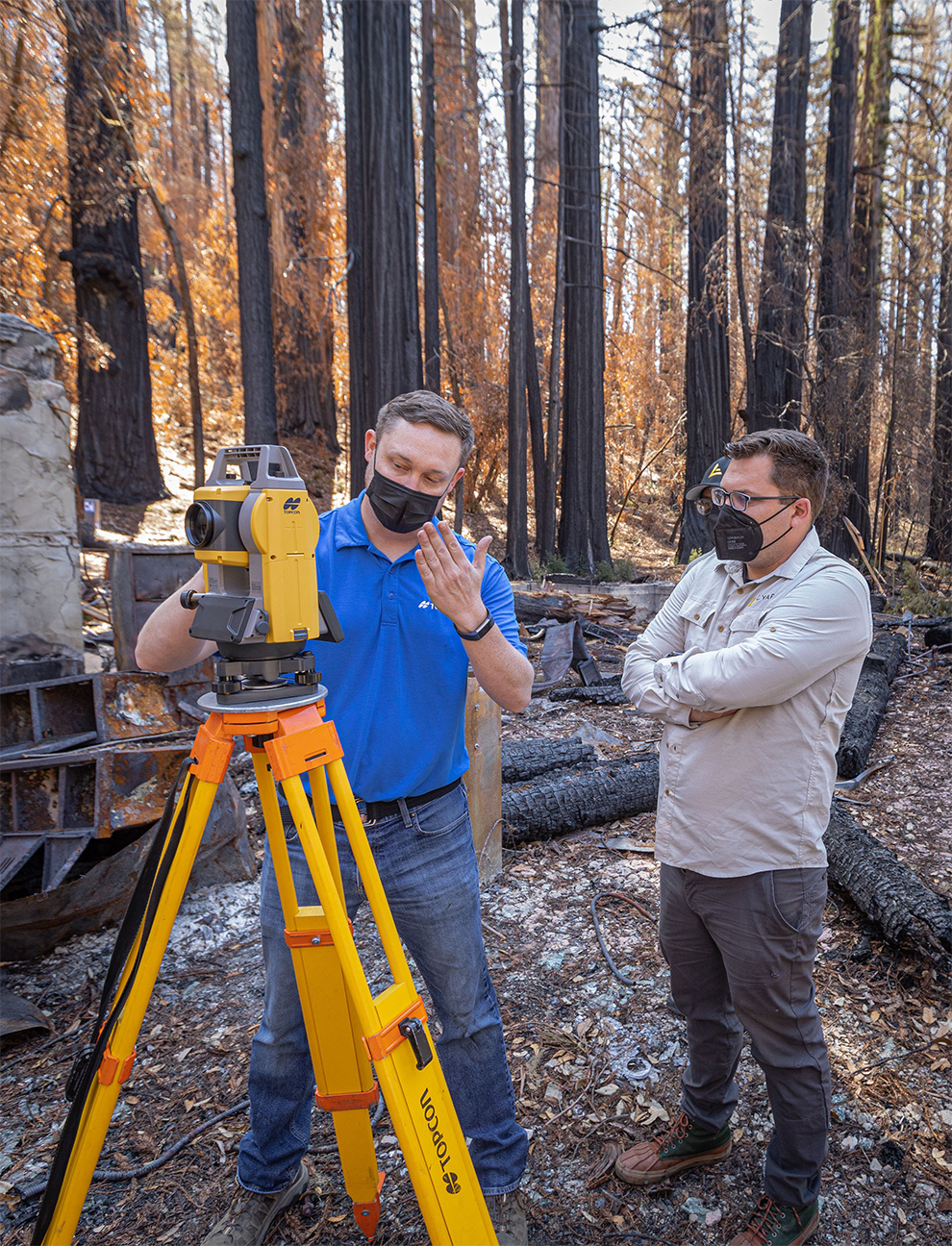
Despite the catastrophic nature of the fire, it's important to remember that, while some redwoods suffered irreversible damage, most of them survived relatively unscathed. The fact that most fared so well is testimony to the natural resistance they’ve developed over millennia (several trees are more than 2,500 years old) which allowed them to develop a thick, tannin-rich, fire-resistant bark.
“It was great to be able to show the resilience of these trees through this project,” said Ristevski.
Capturing a Giant
CyArk used a pair of laser scanners to capture a point cloud of the trees themselves, enhanced by two drones for aerial photogrammetry and DSLR cameras for terrestrial photogrammetry. Ristevski refers to that part of their toolbox as their 3D Core.
“But we also needed to geolocate everything we capture, and for that we turned to our Topcon HiPer SR GPS receiver,” he said. “We also used a Topcon total station to establish control and ensure overall accuracies throughout the survey — both solutions were generously provided by Topcon. They came on as a sponsor of our work more than a year ago, but I think this was the first project on which we had a chance to integrate the new solutions into our workflow. It’s been a great addition; we have a level of that accuracy for geolocation we never had before.”
The resultant project, titled “Resilience of the Redwoods,” is available for viewing at Google’s Arts & Culture platform (artsandculture.google.com/project/redwoods). It not only affords visitors to the site an opportunity to learn about this critical component of the California ecosystem and park history, thanks to CyArk’s work, it allows never-before-seen views of the redwoods themselves.
“We’ve been a partner of Google Arts & Culture for some time and have had a number of projects featured on their platform,” said Ristevski. “When we mentioned this project to them, they were very excited about telling the story of the Redwoods, the fire, the rejuvenation of the park afterwards, etc. They decided to showcase it on their platform — it’s an amazing presentation that, with help from Topcon, we were able to make happen.”
Mutually Beneficial
CyArk’s work and the important impact it will have on future generations cannot be overstated, according to Jamie Williamson, executive vice president for Topcon Positioning Group. “In addition to the critical preservation aspect of their projects, they are making many of these treasures — sites that would never have otherwise been seen and experienced — available to literally anyone with access to a broadband connection. We realize that few companies have the opportunity to be a part of such impactful efforts.”
For his part, Ristevski said he cannot say enough about the importance of their relationship with Topcon. “The solutions they provide us fill a critical gap in our workflow, making the data we collect far more robust and accurate,” he said. “Having Topcon as a sponsor has really enabled us to integrate those solutions into every project now; we are extremely grateful for their help and contribution to our mission. I think when companies like Topcon help organizations like ours in a non-commercial way it is not just great for us, it shows that good corporate social responsibility is alive and well. We couldn’t be happier.”
Neither could Topcon, according to Williamson, who sees his organization’s support of ventures such as B2P and CyArk as natural extensions of a belief in the need for — and the power of — sustainability.
“As a company, we learned early on how critical sustainability can be in agriculture and infrastructure, and our products have evolved to embrace that concept,” he said. “But we also know it goes so much further than that. We see evidence of the concept in almost all facets of what we do: how making the job site more efficient, making each worker on that site more efficient also feeds sustainability. So too, does the work that B2P and CyArk do — work that is ultimately centered around providing a common good. And whether it’s for a village in East Africa or a classroom of potential future scientists, we are thrilled to be a part of that effort.”











